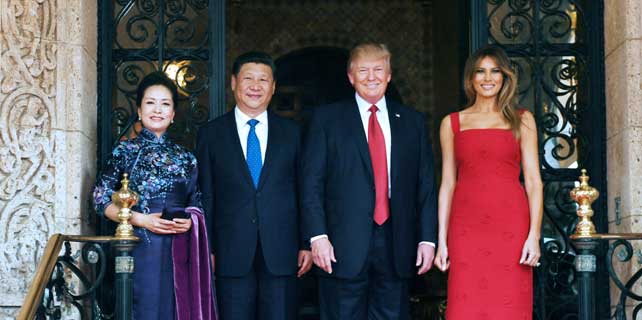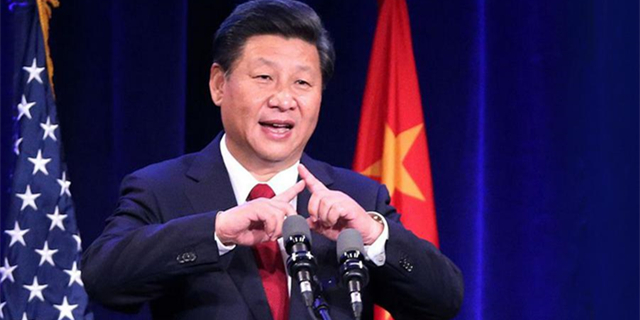Mountain village kindergarten shows way
The Chinese government aims to eliminate poverty and build up a moderately prosperous society by 2020. The United Nations, too, has passed a plan - Transforming Our World: The 2030 Agenda for Sustainable Development -to eradicate poverty by 2030.
A shortage of human capacity is largely to blame for poverty in China. International studies have shown that an investment in children's early childhood development - improving their capacity to contribute to society - is an essential part of the drive to banish poverty.
Early childhood is the key time for brain development. A human brain is 87 percent of the weight of a fully mature one by age 3.
Meanwhile, 80 percent of a person's key development is gained early - from four months before birth to 40 months afterward. Nobel laureate James Joseph Heckman found after a lengthy tracking study that investment in early childhood development could provide the highest return on investment. Each dollar invested yields a return of of $7 to $16.
Investment in early childhood education can help accumulate human resources to add wealth, improve productivity and reduce social injustice.
Preschool education is an import part of early childhood development and an important channel for improving human capacity in China's poverty-stricken rural areas. With the help of two three-year action plans for preschool education, the gross enrollment in kindergartens in China increased from 56.6 percent in 2010 to 75 percent in 2015.
Currently, efforts are being made mainly in county-level cities and townships, rather than smaller villages, meaning that poor children in rural areas are still lacking when it comes to early childhood development. The current gross enrollment in kindergartens in China's clustered poverty-stricken areas remains below 50 percent.
The situation in some poor areas is even worse, with only 30 to 40 percent. Most of the children without access to preschool education are from rural areas. Many are left-behind children, or come from poor or single-parent families.
It should be a key point in poverty relief efforts - both those of the government and the efforts of others in society - to offer preschool education to children on the bottom rung of society, and to build channels through which they can lift themselves. This would also help prevent poverty from spreading to future generations.
Children in unfavorable conditions often lack access to preschool education. Many countries use gross kindergarten enrollment as a key metric for the popularization of preschool education. The Head Start program in the United States, Sure Start in Britain, Universal Access to Early Childhood Education in Australia and the Educate Your Child initiative in Cuba share common goals. Some have continued for decades.
The high-quality public preschool education such programs offer has greatly improved the kindergarten enrollment rate for children in unfavorable conditions, narrowed the development gap between urban and rural areas and promoted social justice.
It's a must to target kindergarten enrollment in poverty-stricken areas in China, which is the toughest part of the country's preschool education development. And the most practicable means to break obstacles for such children for their three-year preschool education is to send the education to the rural areas.
Since 2009, the China Development Research Foundation has established 1,100 kindergartens in mountainous areas in 12 counties across eight provinces, including Qinghai, Guizhou and Hunan. And 1,192 volunteers have been recruited. Based on the number of children, one to two volunteers are dispatched to each kindergarten, which is set up in unused rooms in local primary schools or government buildings. The annual cost of each of the kindergarten is only 30,000 yuan ($4,340; 4,100 euros; 3,570).
In total, there are now 30,000 children in these kindergartens. The gross enrollment rate for three-year preschool education in the project areas has increased to 90 percent. Expert assessments show that the project has narrowed children's gap with their urban peers in language, behavior, cognitive competence and other areas.
Many local governments in China have taken action to promote early childhood development. Guizhou province, for example, plans to increase the enrollment rate in three-year preschool education, nine-year compulsory education and three-year high school education to more than 85 percent by 2017.
Only three years are left before 2020. To ensure that every poor child gets a sunny start in that limited time, we suggest that a "sunny start" project be started in China to offer poor children preschool education and nutritional intervention, and that more village kindergartens be set up in rural areas to increase the preschool education enrollment rate in the country to 90 percent.
We should ensure that there is at least one kindergarten in every administrative village in 832 poverty-stricken counties, and include the goals of China's National Program for Child Development (2011-20) in the assessment system to grade local governments' poverty-relief work.
The author is executive director of child development center at China Development Research Foundation. The views on the this page do not necessarily reflect those of China Daily.
















